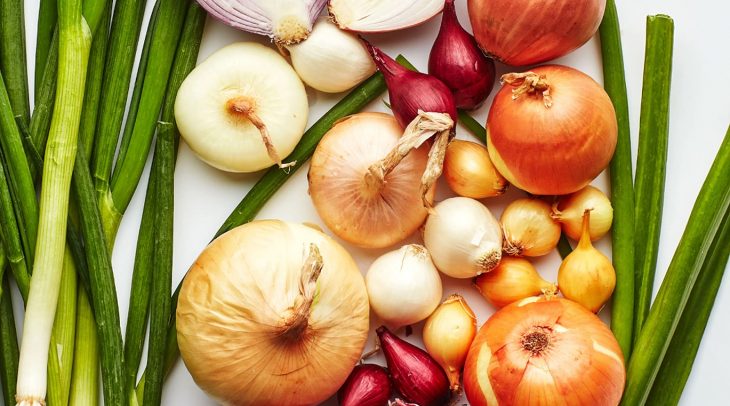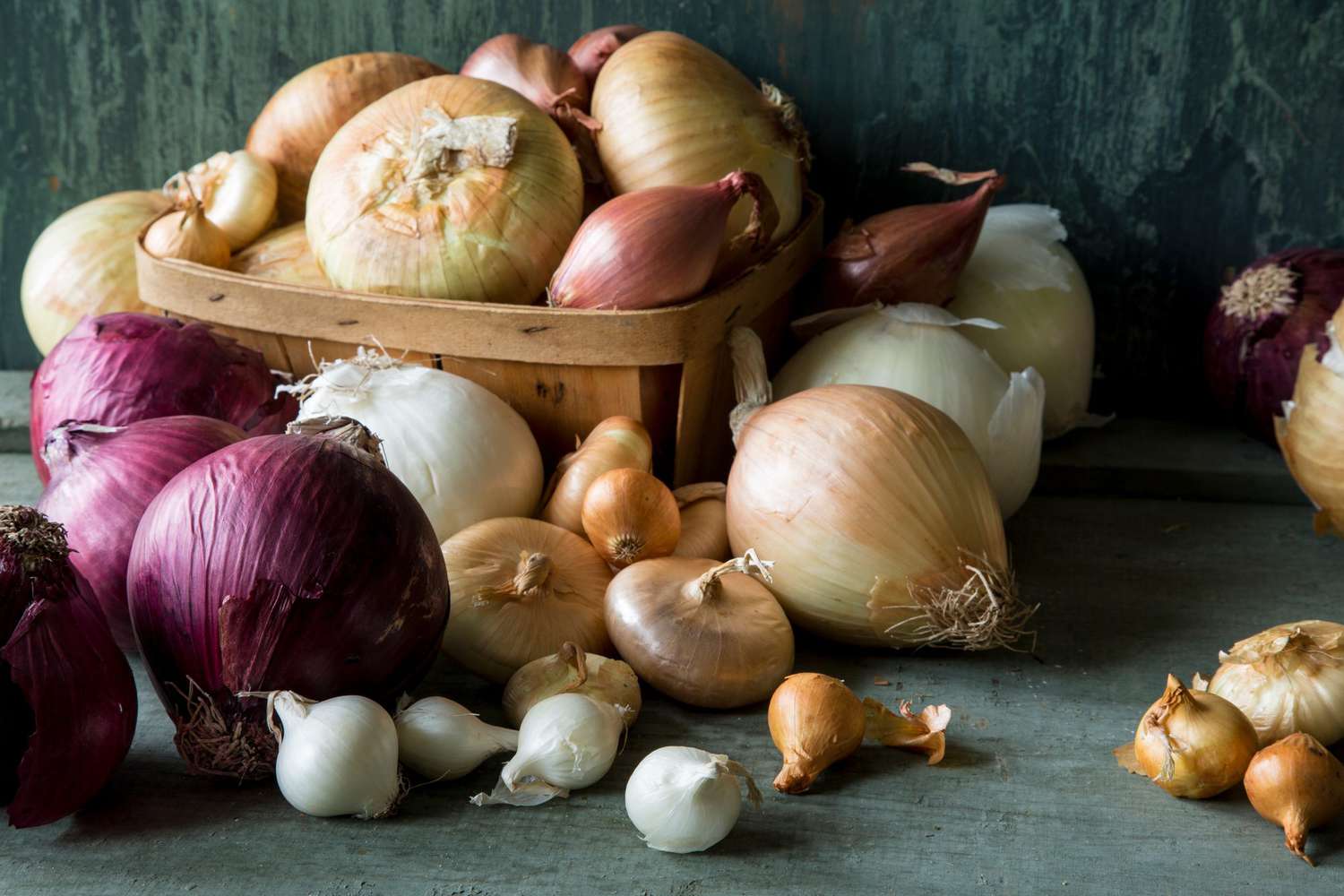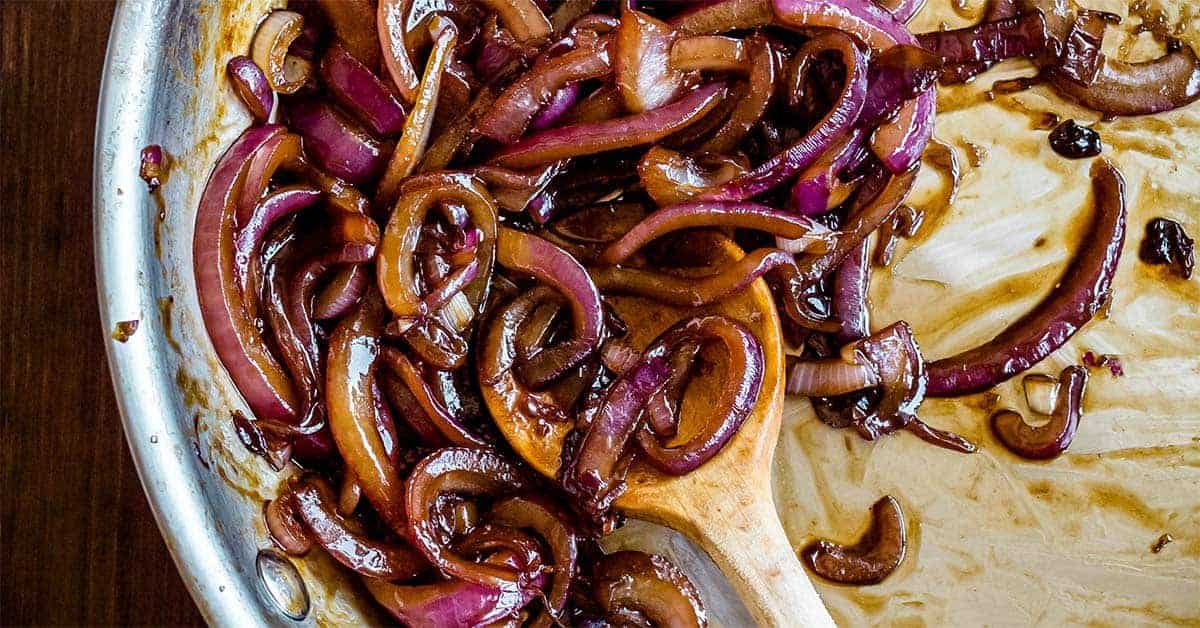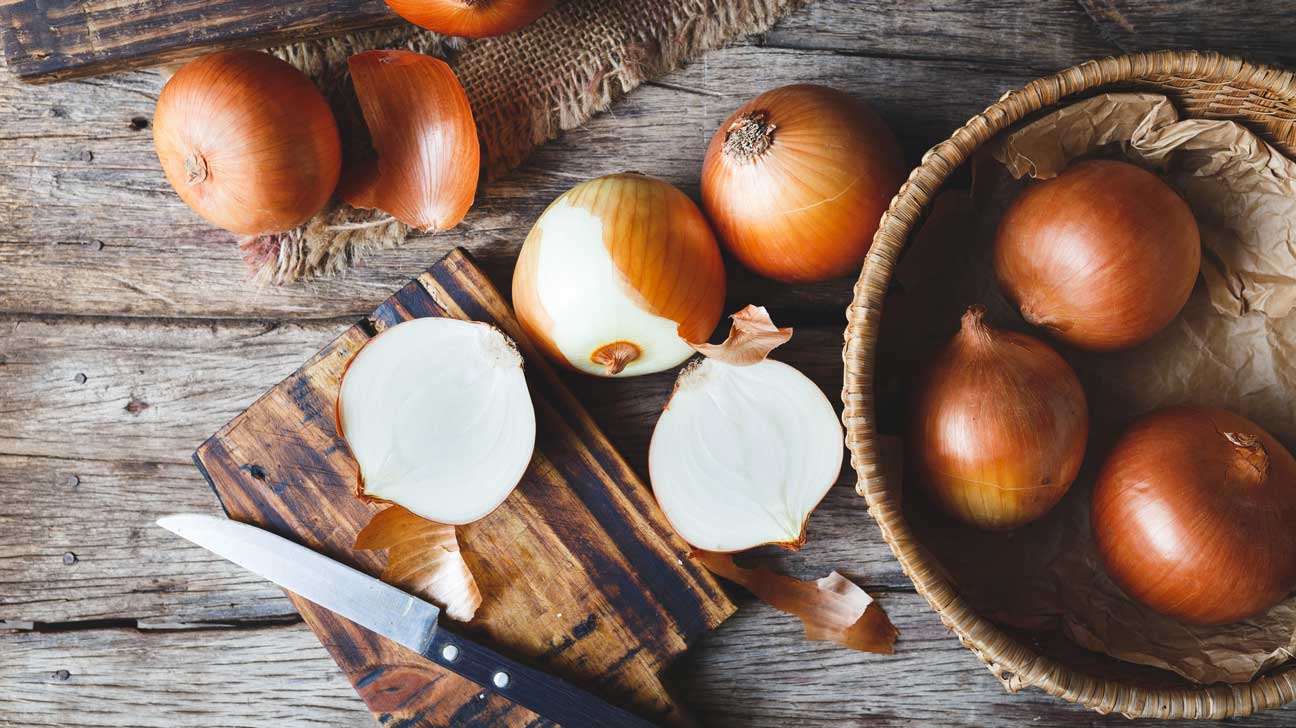
Onions are a staple ingredient in countless culinary traditions around the world. Whether sautéed to bring out their sweet aroma or sliced raw to add a refreshing crunch to salads, onions have become an indispensable part of our kitchens. However, beyond their culinary uses, onions hold a fascinating array of qualities and historical significance. In this article, we will dive deep into the layers of onion facts, uncovering its botanical origins, nutritional benefits, and intriguing historical anecdotes.
The Botanical Background of Onions
Onions belong to the Allium genus, which also includes garlic, shallots, and chives. Scientifically known as Allium cepa, onions are biennial plants that develop an underground bulb composed of fleshy, concentric layers. This bulb serves as the primary edible part of the onion, with different varieties exhibiting distinct colors and flavors.
A World of Onion Varieties
From the mild and versatile yellow onions to the pungent red onions and the sweet Vidalia onions, the world boasts a diverse range of onion varieties. Each variety possesses unique flavor profiles, making them suitable for specific culinary applications. Shallots, with their delicate and subtle taste, are often favored in gourmet recipes, while scallions offer a milder onion flavor that works well in salads and stir-fries.

Nutritional Powerhouses
Onions may be humble in appearance, but they pack a powerful nutritional punch. They are low in calories and a great source of dietary fiber, vitamin C, and various essential minerals. Additionally, onions contain quercetin, a flavonoid that possesses antioxidant properties and has been linked to potential health benefits, including reducing inflammation and promoting heart health.
From Ancient Medicine to Modern Research
Onions have been used for medicinal purposes since ancient times. In traditional medicine, they were believed to have diuretic, antibacterial, and antifungal properties. Today, scientific research has shed light on the potential health benefits of onions. Studies suggest that consuming onions may contribute to reducing the risk of certain types of cancer, improving bone density, and supporting digestive health.
Onion Farming: Cultivating the Layers
Onion cultivation requires specific conditions to ensure optimal growth. The plants thrive in well-drained soil with a pH level between 5.5 and 6.5. Farmers carefully sow onion seeds or transplant young onion plants, and the bulbs gradually form and mature over several months. Onions are generally ready for harvest when the leaves start to wither and turn yellow. They are then cured and stored under controlled conditions to preserve their quality.
The Tearful Side of Onions
Cutting onions often triggers a tearful reaction, leading to watery eyes and occasional sniffles. This phenomenon occurs due to a chemical reaction that takes place when the onion’s cells are damaged. When an onion is cut or chopped, it releases an enzyme called alliinase, which converts sulfur compounds into a volatile gas. This gas combines with the moisture in our eyes, forming a mild sulfuric acid that irritates the eyes and stimulates tears.

Peeling Back the Layers of History
Onions have a rich historical background, dating back thousands of years. They were cultivated in ancient Egypt, with evidence of their presence found in tomb paintings and sculptures. Onions were so highly regarded that they were used as currency to pay workers during the construction of the Great Pyramid of Giza. These versatile vegetables also played a significant role in the diets of ancient Greek and Roman civilizations.
Onions in Folklore and Superstitions
Onions have long been associated with folklore and superstitions. In many cultures, onions were believed to possess protective properties against evil spirits and illnesses. Placing an onion in a room was thought to absorb any negativity or harmful energy. Moreover, in some superstitions, onions were used as charms to ward off the evil eye or bring good luck to a household.
Onions: A Symbol of Endurance
Throughout history, onions have symbolized endurance and survival. Their ability to thrive in various climates, their long shelf life, and their resistance to pests and diseases have contributed to this symbolism. Onions were often taken on long sea voyages, as they could be stored for months without spoiling. This made them a valuable source of sustenance for sailors during their arduous journeys.
Onions in Art and Literature
Onions have also left their mark on the world of art and literature. In Dutch still-life paintings of the 17th century, onions were often depicted as symbols of transience and mortality. The famous Spanish painter, Francisco de Zurbarán, dedicated an entire series of paintings to onions, capturing their beauty and simplicity. In literature, onions have been mentioned in various works, such as William Shakespeare’s play “Troilus and Cressida,” where the character Pandarus humorously refers to onion as “a many-headed monster.”
Cooking Techniques and Onion Flavor
Onions can be prepared using a range of cooking techniques, each resulting in a different flavor profile. Sautéing onions in oil or butter brings out their natural sweetness and softens their texture. Caramelizing onions over low heat for an extended period intensifies their flavor, resulting in a rich and sweet taste. Pickling onions, on the other hand, adds a tangy and slightly acidic note, making them a delightful addition to salads and sandwiches.

Onions: Versatility on the Plate
Onions are incredibly versatile in the kitchen and can be used in numerous dishes. They serve as a flavorful base for many recipes, such as soups, stews, and sauces. Onions can be finely chopped to add a burst of flavor to salsas and relishes or sliced into rings and battered for delicious onion rings. They can be grilled, roasted, or even stuffed to create a wide range of appetizing dishes that cater to different tastes and preferences.
Onions: A Global Culinary Journey
Onions have transcended cultural boundaries and are integral to diverse cuisines worldwide. In Indian cuisine, onions are frequently used as a foundation for curries and spice blends. In Mexican cuisine, raw onions are an essential topping for tacos and other street foods. French cuisine showcases the delicate sweetness of caramelized onions in dishes like French onion soup. From Asian stir-fries to Italian pasta sauces, onions form the backbone of countless culinary traditions.
Fun Onion Trivia
Let’s delve into some fun and intriguing onion trivia:
- The world’s largest onion was grown in 2012 and weighed a whopping 18 pounds and 11 ounces, equivalent to the weight of four newborn babies!
- The city of Walla Walla in Washington State, USA, is renowned for its sweet onions. The Walla Walla Sweet Onion is the official state vegetable of Washington.
- In 2019, a 50-kilogram (110-pound) sculpture of an onion was stolen from an Australian restaurant. The onion was later found abandoned but unharmed, leading to a flurry of amusing headlines.
- The term “onion” originates from the Latin word “unio,” meaning “unity” or “large pearl,” referring to the bulb’s shape and compact layers.
Onions in Medicine and Home Remedies
Beyond their culinary uses, onions have been employed for medicinal purposes throughout history. Their antimicrobial properties have made them a popular home remedy for treating coughs, colds, and sore throats. Applying a slice of onion to a bee sting or insect bite was believed to alleviate pain and reduce swelling. The pungent juice of onions was also utilized as a natural dye and as a way to repel insects.
Onions in Symbolic Traditions
Onions have found their place in various symbolic traditions around the world. In the Jewish Passover Seder, onions are included on the Seder plate to represent the tears shed during slavery in Egypt. In Iran, during the Persian New Year celebration known as Norouz, a bowl of sprouting lentils and onions symbolizes rebirth and renewal. These symbolic uses of onions reflect the deep-rooted cultural significance they hold in different societies.

Curious Onion Hybrids
Through cultivation and cross-breeding, unique onion hybrids have been developed. One intriguing example is the “Egyptian Walking Onion,” also known as the “Tree Onion” or “Topset Onion.” This perennial plant produces clusters of small bulbs at the top of its stalks instead of flowers. When these bulbs become heavy, they cause the stalk to bend, resulting in the plant “walking” as the bulbs touch the ground and root themselves.
Onions: More than Food
Onions have been employed for purposes beyond the culinary realm. In ancient times, their strong odor and believed antibacterial properties led to their use as a remedy for snake bites. During World War I, onions were utilized to combat infections and promote wound healing due to their antimicrobial properties. Additionally, the pungent odor of onions has been used to repel insects, making them a natural alternative to chemical insecticides.
Storing and Handling Onions
Proper storage and handling can significantly extend the shelf life of onions. To maximize their longevity, it is crucial to keep onions in a cool, dry, and well-ventilated space. Avoid storing them near potatoes, as the gases released by potatoes can cause onions to spoil more quickly. Whole, uncut onions can last for several weeks or even months if stored correctly, while chopped or sliced onions should be used within a few days.
Conclusion
Onions, with their rich history, diverse varieties, and numerous health benefits, have firmly established themselves as a beloved and versatile ingredient in cuisines worldwide. From ancient civilizations to modern-day kitchens, the onion’s enduring popularity is a testament to its culinary and cultural significance. So, the next time you slice into an onion and its familiar aroma fills your kitchen, remember the layers of stories, symbolism, and flavors that this remarkable vegetable brings to our plates.
Frequently Asked Questions (FAQs)
Can eating onions help with hair growth?
While onions have been popularly associated with promoting hair growth, scientific evidence supporting this claim is limited. Some studies suggest that onion juice may have a positive impact on hair growth due to its sulfur content, but further research is needed to establish its effectiveness.
What is the best way to reduce tears when cutting onions?
To reduce tears while cutting onions, you can try refrigerating the onion before slicing it or cutting the onion under running water. Using a sharp knife and cutting near a running fan can also help disperse the onion’s volatile compounds, reducing eye irritation.
Can onions be frozen for later use?
Yes, onions can be frozen for later use. It is recommended to peel, chop, and blanch the onions before freezing them in airtight containers or freezer bags. Properly stored, frozen onions can maintain their quality for several months.
Are there any alternatives to onions for adding flavor to dishes?
If you’re looking for alternatives to onions, you can experiment with shallots, leeks, or scallions, which offer similar flavor profiles. Garlic, celery, and fennel can also add depth and flavor to dishes.
Do different onion colors have distinct flavors?
Yes, different onion colors, such as yellow, red, and white, have distinct flavors. Yellow onions are generally milder and sweeter, while red onions have a sharper and slightly more pungent taste. White onions are often described as having a crisper and cleaner flavor.
Was this page helpful?
Our commitment to delivering trustworthy and engaging content is at the heart of what we do. Each fact on our site is contributed by real users like you, bringing a wealth of diverse insights and information. To ensure the highest standards of accuracy and reliability, our dedicated editors meticulously review each submission. This process guarantees that the facts we share are not only fascinating but also credible. Trust in our commitment to quality and authenticity as you explore and learn with us.
